We may earn money or products from the companies mentioned in this post. This means if you click on the link and purchase the item, I will receive a small commission at no extra cost to you ... you're just helping re-supply our family's travel fund.
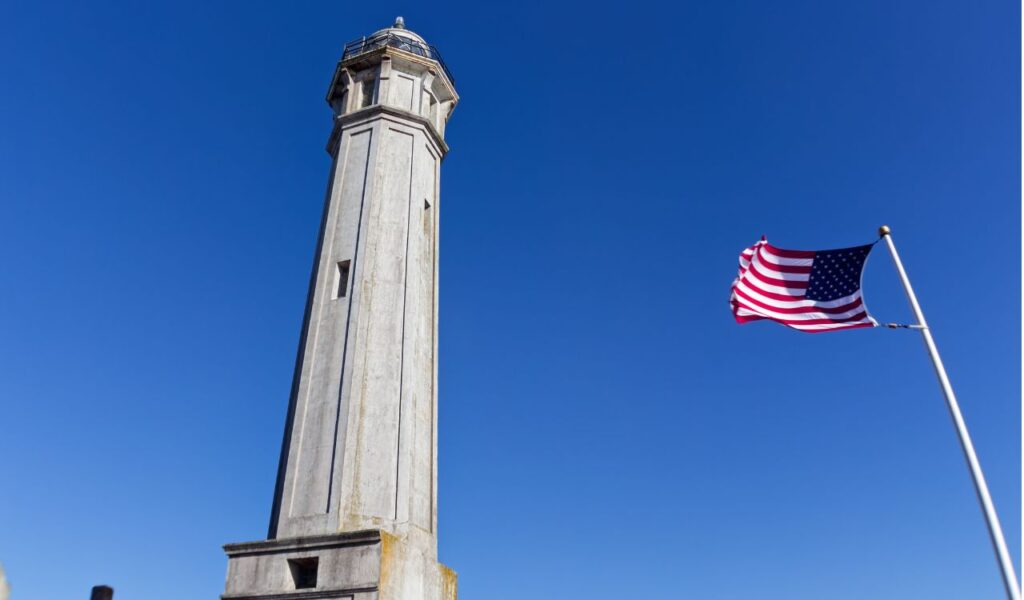
Lighthouses grip the imagination because they stand where certainty ends, on wave-battered cliffs, fog-thick headlands, and harbor thresholds, casting a steady signal through uncertainty. This gallery brings together ten coastal beacons whose stories span rebellion and rebirth, shipwrecks and science, daring engineering and community devotion. Think of it as a shoreline road trip through American maritime history: start in New England’s formative light, sweep down the Atlantic, and arc across the Pacific to towers that still hold the horizon.
Boston Light, Massachusetts
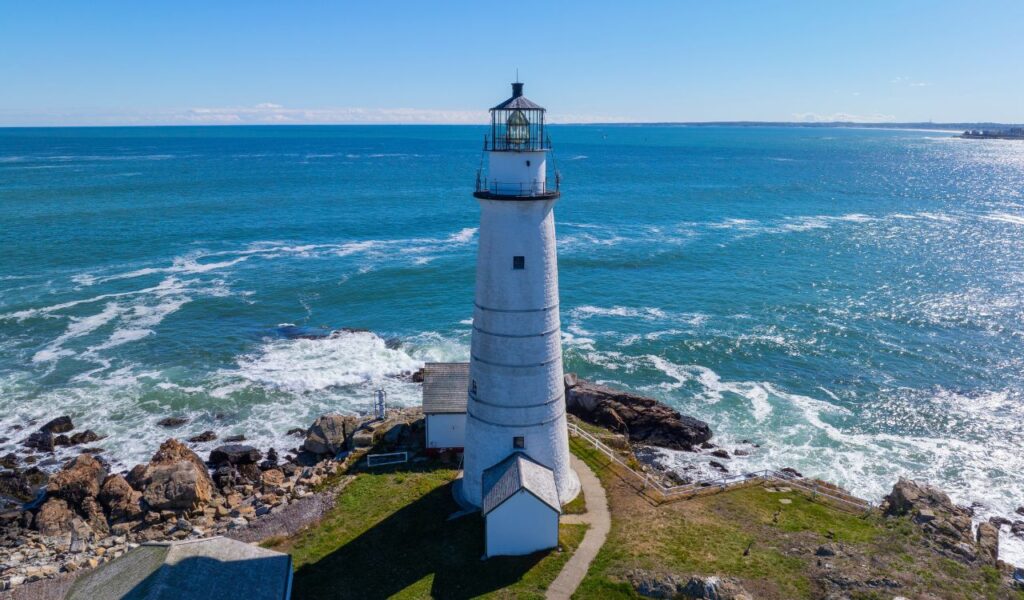
America’s lighthouse story begins here. First lit in 1716 on Little Brewster Island, the original tower was destroyed in the Revolutionary War and rebuilt in 1783, making the site the nation’s oldest continuously used light. For centuries it guided ships into Boston Harbor through fog and fierce nor’easters. Long staffed into modern times, it preserves keeper traditions alongside sweeping harbor views, an enduring symbol of safe passage and the birth of U.S. coastal navigation.
Portland Head Light, Maine
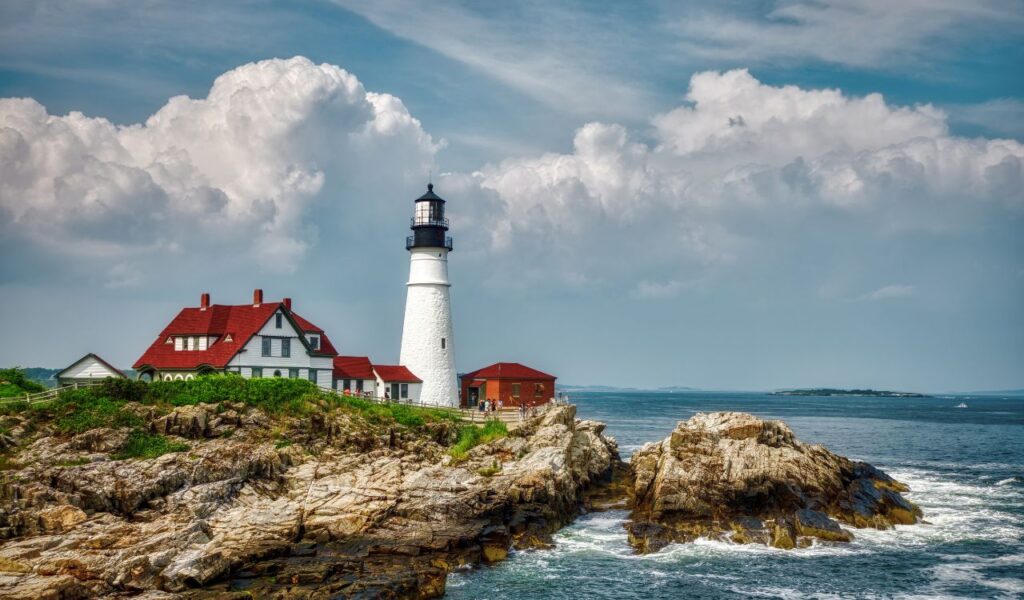
Commissioned in the 1790s at Cape Elizabeth, this granite sentinel stands over craggy cliffs and thunderous surf, the archetypal New England seascape. Its light has watched merchantmen, clipper ships, and modern traffic alike while inspiring writers and artists for generations. With a picturesque keeper’s house and a museum rich in artifacts, it blends aesthetics and endurance, proof that function and beauty can share the same rocky promontory where Atlantic weather writes daily dramas.
Cape Hatteras Lighthouse, North Carolina

Rising from the Outer Banks, the spiral-striped giant guards Diamond Shoals, the “Graveyard of the Atlantic,” where shifting sandbars wrecked countless ships. In 1999, engineers moved the entire brick tower 2,900 feet inland to spare it from erosion, a preservation feat as dramatic as any storm. Its beam still cuts through Atlantic weather, pairing coastal engineering audacity with a living link to centuries of maritime peril and resilience along a treacherous stretch of coast.
St. Augustine Lighthouse, Florida
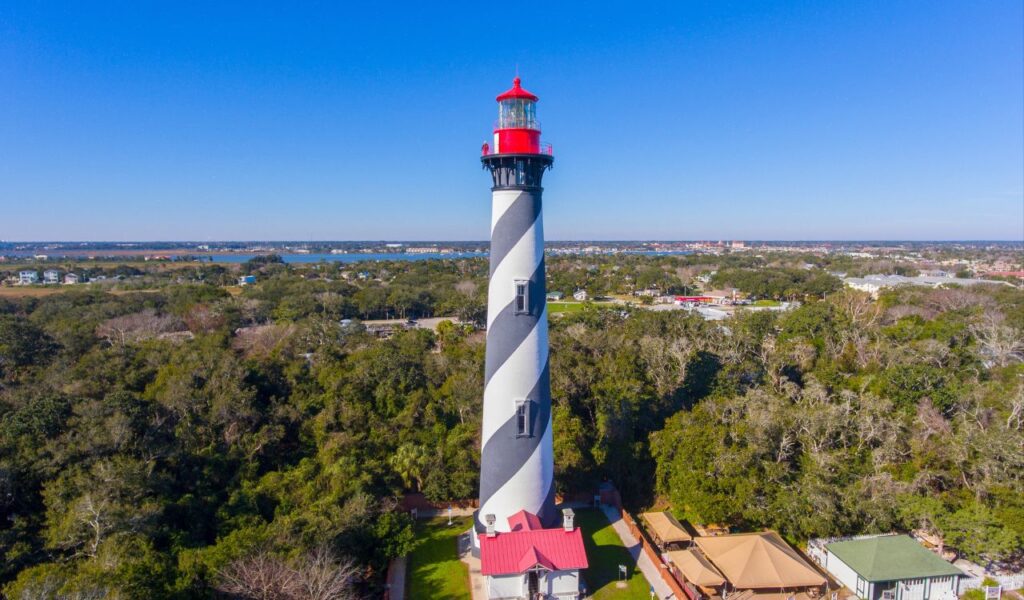
On America’s oldest coast, this towering black and white, spiral-striped landmark marries history with hands-on discovery. Maritime archaeologists here have recovered shipwreck stories from the seafloor, while the museum and former keepers’ quarters immerse visitors in lighthouse life. Its 219 steps deliver sweeping Atlantic views and a literal sense of the climb that keepers made. From Civil War era beginnings to modern stewardship, it’s a living classroom for navigation and preservation.
Ponce de Leon Inlet Light, Florida
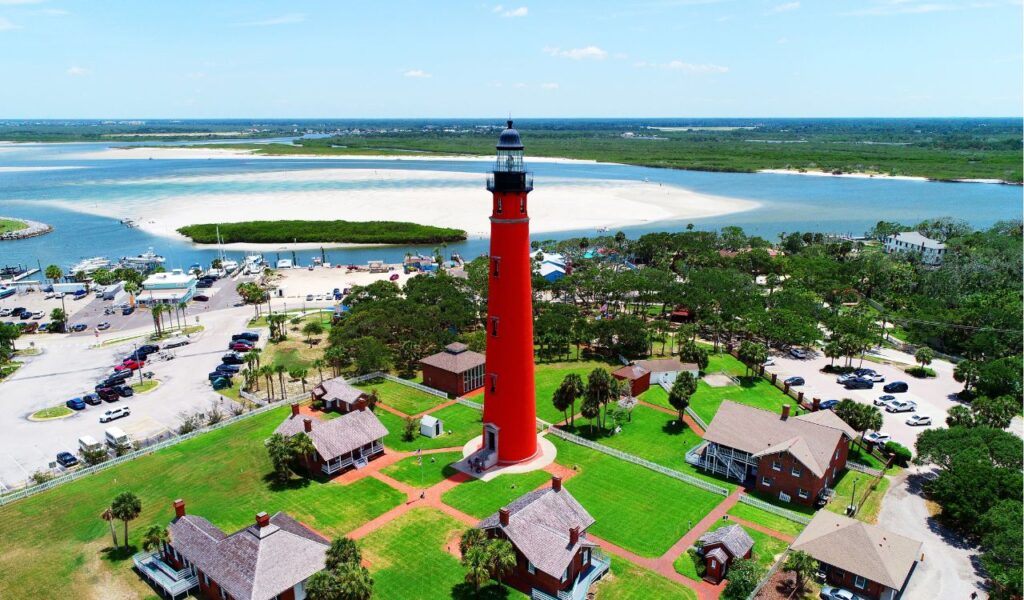
Florida’s tallest lighthouse rises 175 feet over the Atlantic at Ponce Inlet, a remarkably intact light station where eight of the original ten buildings still tell a complete keeper’s story. Climb 203 steps for sweeping views down the coast and, on clear days, to Cape Canaveral. First lit in 1887, it bridged the age of sail to modern navigation. Its preservation is a model of community commitment, keeping the red brick tower an active gateway to Florida’s maritime past.
Romer Shoal Lighthouse, New York Harbor (NJ/NY)
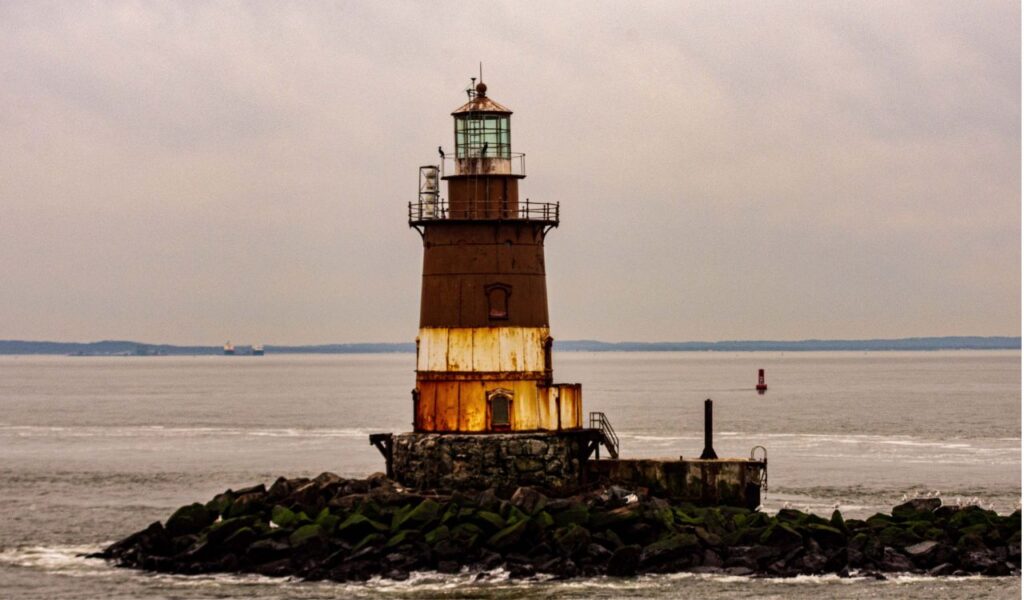
Standing guard near the approaches to Ambrose Channel, Romer Shoal is a rugged, 19th century sparkplug tower with an outsized role in one of the world’s busiest harbors. Listed on the National Register of Historic Places, it withstood storms, including Sandy, and continues to be the focus of restoration and advocacy. Its industrial romantic silhouette evokes the grit of harbor work and the grace of safe passage, where open ocean meets the city’s restless tides.
Pigeon Point Lighthouse, California
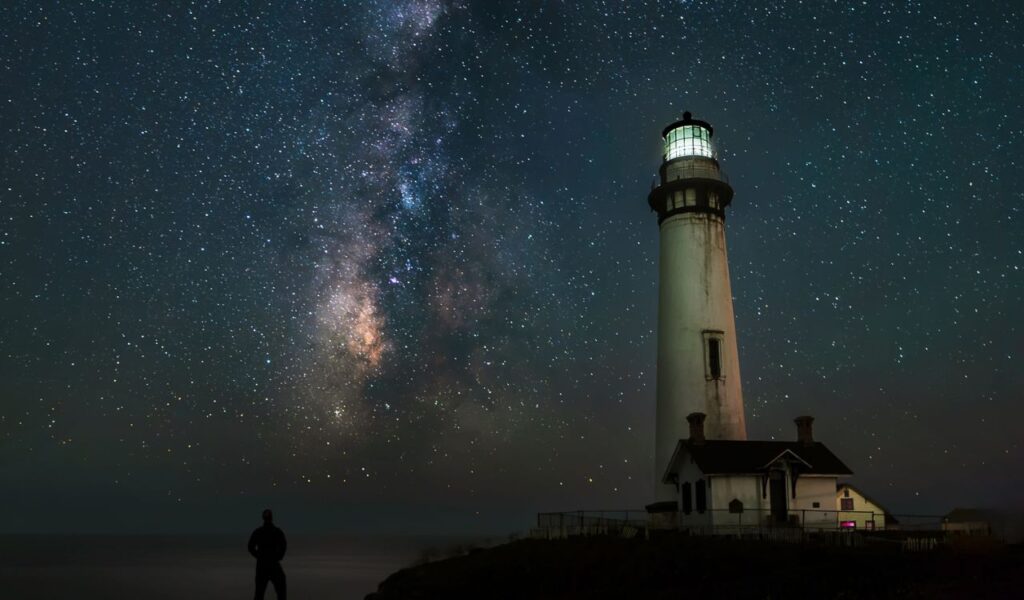
Perched above surf lashed cliffs near Pescadero, Pigeon Point is among the tallest on the West Coast, once powered by a first order Fresnel lens, an optical marvel of glass prisms that hurled light across the Pacific. The station’s rugged setting is a seasonal stage for migrating whales and storm washed sunsets, while restoration efforts safeguard its slender white tower. It endures for both engineering and emotion, a lookout where wild ocean, human craft, and time converge.
Point Reyes Lighthouse, California
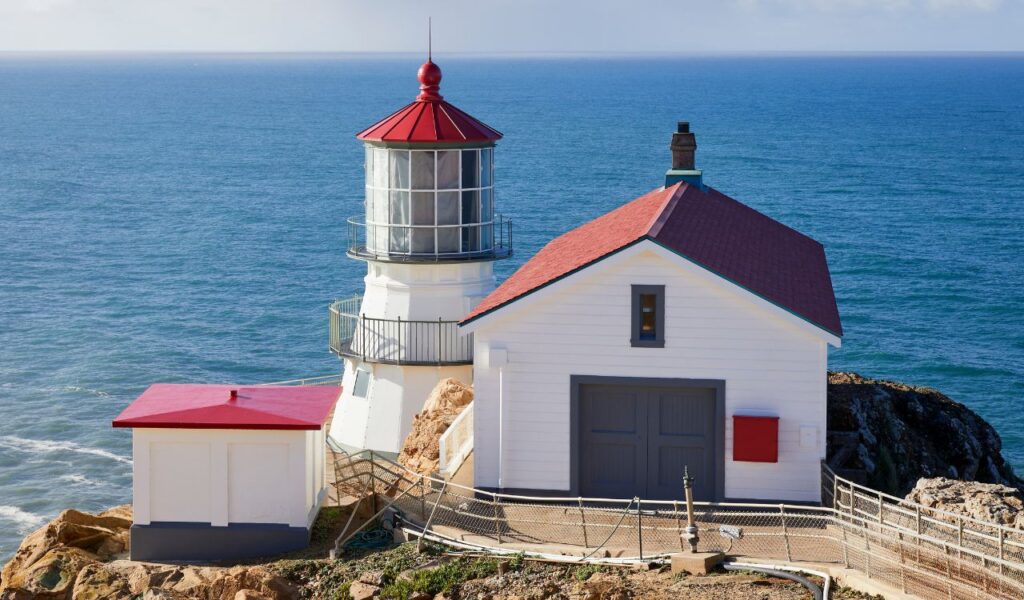
Clinging to the Marin headlands, Point Reyes meets some of the fiercest weather on the Pacific, with howling winds and persistent fog that earned it a vital warning role for generations of mariners. Reached by steep stairs that test the legs, the station’s isolation is palpable, its lantern a steadfast counterpoint to perilous rocks below. This is where the romance of lighthouses turns visceral, the elements roar, the cliffs plunge, and the light remains unwavering.
Point Arena Lighthouse, California
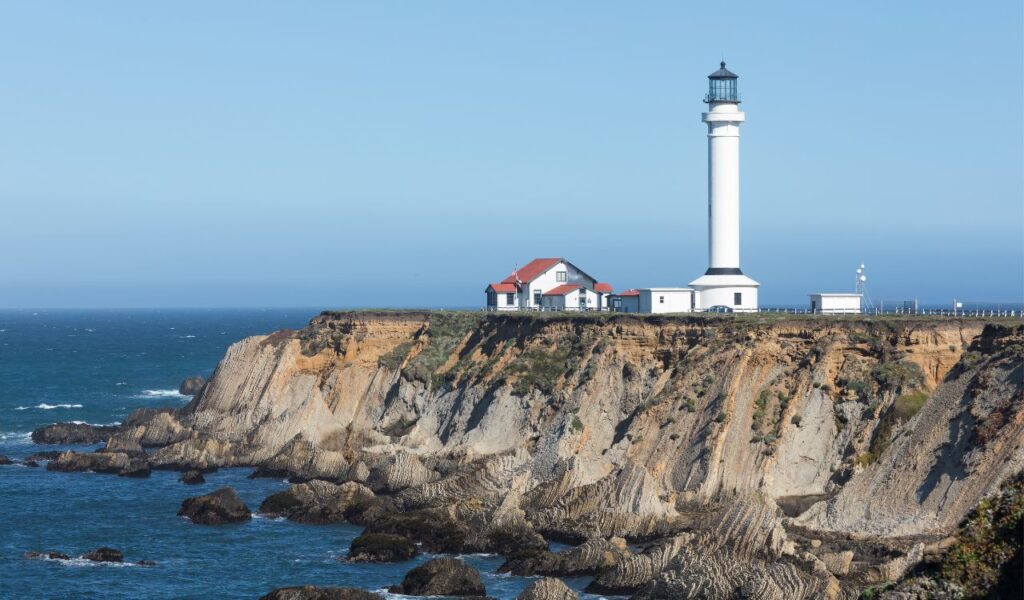
At 115 feet, Point Arena is widely cited as the tallest lighthouse on the U.S. West Coast, standing where the coastline makes a pivotal bend. Rebuilt after the 1906 earthquake with reinforced design, it’s a study in resilience, purpose built to withstand seismic reality while throwing a strong beam along a hazardous reach. Its museum and keeper’s quarters frame ocean panoramas, while the tower’s stark silhouette against cobalt horizons delivers California’s wild edge.
Alcatraz Island Light, California

Before the prison’s legend, Alcatraz was the site of the West Coast’s first lighthouse, first lit in 1854. The current 84 foot tower dates to 1909, its beam sharing a fogbound stage with the former penitentiary and Golden Gate tides. Automated in 1963, it still feels intensely human, a reminder that mariners once depended on keepers to pierce San Francisco Bay’s notorious mists. Few places fuse maritime necessity and myth so tightly in one stark, wind swept frame.